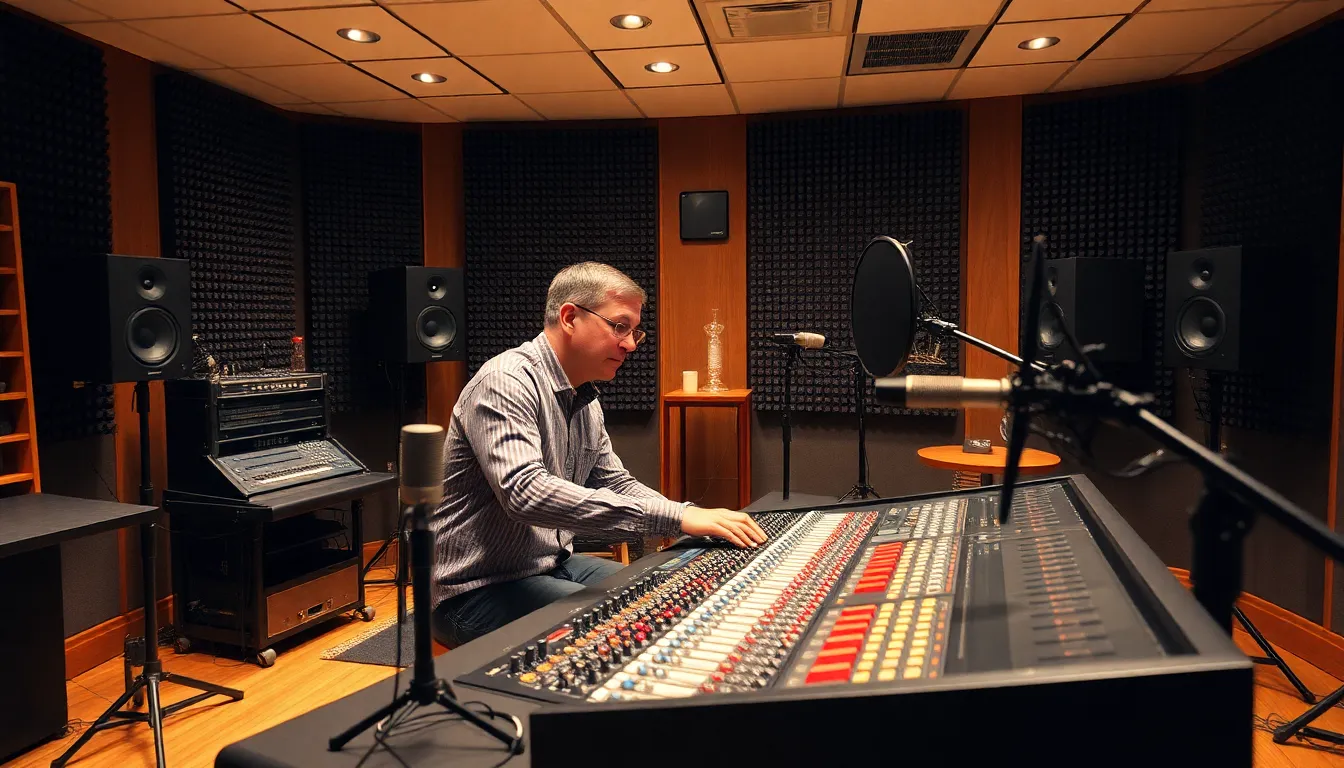Imagine watching your favorite movie, and suddenly, the quietest whisper feels like a thunderous roar. That’s the magic of dynamic sound range! It transforms ordinary audio into a breathtaking experience, making every note and nuance come alive. From the softest sigh to the loudest explosion, this concept is the secret sauce behind immersive soundscapes that leave audiences on the edge of their seats.
Table of Contents
ToggleUnderstanding Dynamic Sound Range
Dynamic sound range significantly impacts audio experiences. This concept encompasses the difference between the quietest and loudest sounds in an audio track.
Definition of Dynamic Sound Range
Dynamic sound range refers to the range of loudness that audio signals can produce. It includes the softest sounds, like faint whispers, and the loudest ones, such as thunderous explosions. This range is measured in decibels (dB), which quantifies sound intensity. A wider dynamic sound range enhances clarity and detail, allowing listeners to perceive subtleties in the audio.
Importance in Audio Quality
Importance factors into how dynamic sound range affects overall audio quality. A well-defined range creates a more immersive experience, capturing subtleties in music and dialogue. It ensures that quiet moments aren’t lost and that louder segments don’t become overwhelming. Producers utilize dynamic sound range to evoke emotions and maintain audience engagement. Films and music benefit from this technique by delivering a rich, vibrant soundscape that draws in listeners.
Factors Affecting Dynamic Sound Range

Dynamic sound range depends on several factors, which influence audio quality significantly. Understanding these factors helps producers and audio engineers to improve overall sound experiences.
Equipment Limitations
Equipment limitations directly impact the dynamic sound range. Lower-quality sound systems fail to reproduce a wide range of frequencies, which diminishes audio clarity. Speakers play a crucial role in conveying sound accurately. Inadequate amplifiers may distort louder sounds or suppress softer ones, compressing the overall range. Microphones also need to be of high quality. Poorly chosen microphones can capture audio inaccurately, losing subtle details. Maintaining high-quality cables ensures minimal signal loss, which contributes to better sound fidelity.
Recording Techniques
Recording techniques greatly affect the dynamic sound range. Proper placement of microphones captures the full spectrum of sounds, ensuring accuracy. Utilizing techniques like gain staging aids in preserving audio integrity. This process manages input levels effectively, preventing distortion during recording. Many producers employ multi-layered recording, which enhances depth and richness in sound. Limiting the use of compression maintains the natural dynamics of audio tracks. Finally, careful mixing allows for balance between soft and loud sounds, ensuring clarity throughout the entire track.
Benefits of a Wide Dynamic Sound Range
A wide dynamic sound range greatly improves the listening experience. It captures subtle sounds and contrasts them effectively, enriching audio quality.
Enhanced Listening Experience
Listeners engage more with audio that features a wide dynamic sound range. Clarity in quiet moments allows for nuanced details to emerge, making dialogues more impactful. Loud segments resonate with energy, ensuring moments of action create excitement. This contrast captivates audiences, drawing them into the narrative, whether in films or music. Using high-quality equipment further enhances this experience, allowing for a fuller representation of sound. A diverse soundscape enriches emotional responses, making listeners feel connected to the content.
Impact on Various Genres
Different music genres benefit from a wide dynamic sound range in distinct ways. Classical compositions use dynamic variation to evoke strong emotions, emphasizing crescendos and soft passages. Rock and pop tracks rely on loudness to generate intensity, ensuring memorable hooks capture attention. Jazz employs subtle dynamics that highlight improvisation, letting musicians express their creativity. Electronic music thrives on contrasts between bass drops and airy synths, creating stimulating auditory experiences. Each genre finds its strength in how sound dynamics influence overall composition, engaging listeners differently while enhancing appreciation for the artistry.
Challenges in Achieving Optimal Dynamic Sound Range
Achieving an optimal dynamic sound range presents various challenges that audio professionals encounter frequently.
Environmental Considerations
Environmental factors complicate the realization of a wide dynamic sound range. Room acoustics play a crucial role since reflective surfaces can distort sound waves, altering the listening experience. Poorly designed listening environments often lead to muddled audio, limiting frequency response and dynamic range. Additionally, background noise adds another layer of complexity, masking subtle audio details and reducing clarity. Sound treatment materials like acoustic panels can mitigate these effects, enhancing overall sound quality and preserving dynamics. Noise isolation measures further help to maintain audio integrity in spaces with high ambient sound.
Listener Differences
Listener preferences contribute significantly to challenges in dynamic sound range achievement. Personal hearing abilities vary, impacting individual perception of frequencies and volumes. Some listeners may not perceive subtle nuances, while others might react strongly to louder sounds. Diverse listening environments, from home setups to public venues, further amplify these differences. Variability in equipment quality, such as headphones or speakers, can also influence how certain audio dynamics are experienced. Thus, understanding these listener differences is essential for tailoring audio production to enhance the dynamic sound range effectively across varied audience preferences.
Dynamic sound range plays a crucial role in elevating audio experiences across various media. By capturing the full spectrum of sound from the softest whispers to the loudest explosions, it creates an immersive atmosphere that resonates with listeners. This technique not only enhances clarity but also allows for emotional engagement, making every moment in music and film impactful.
As audio professionals navigate challenges such as equipment limitations and environmental factors, understanding the importance of dynamic sound range remains essential. Embracing this concept can lead to richer soundscapes that engage audiences on a deeper level. Ultimately, a well-crafted dynamic sound range enriches the listening experience, ensuring that every note and nuance is felt and appreciated.





